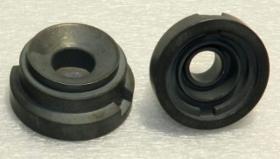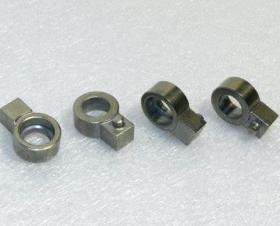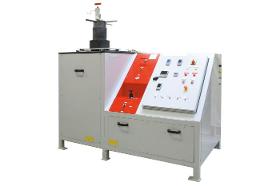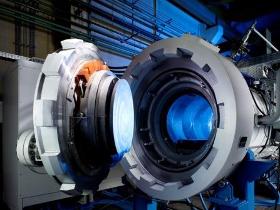- europages
- >
- COMPANIES - SUPPLIERS - SERVICE PROVIDERS
- >
- sintered parts
Results for
Sintered parts - Import export

CIC - KLAUS CZERWONKA
Germany
Forged parts made of steel, stainless steel and aluminum including mechanical processing. Pressed brass blanks including mechanical processing, also on rotary transfer machines. Sintered parts made of sintered bronze, sintered porous brass and stainless steel. Filter elements for air, liquids and fuel made of sintered ball material or mesh.
Request for a quote
EUROBALT ENGINEERING OÜ
Estonia
Our production line can produce all base sintered parts for shock absorbers manufacturing. Usually for the manufacture of shock absorber parts we use metal powders Sint C10 and Sint C11, this is the basic material for the production of such parts. Also we can use the material according to your requirements.
Request for a quote
EUROBALT ENGINEERING OÜ
Estonia
We provide the powder metallurgy manufacturing with a wide range of advantages for our clients: Excellent surface finishes Excellent tolerance control Cost-effective processing Inexpensive materials A wider variety of alloys to use A high-quality end products Machining minimization while producing parts Controlled porosity for self-lubrication or filtration Materials that can be heat-treated Our production line provides manufacturing Sintered parts for suspension, Sintered parts for oil pumps, Sintered parts for engine, Sintered parts for start motors, Sintered parts for transmission and other custom parts according to your drawings.
Request for a quote
EUROBALT ENGINEERING OÜ
Estonia
Currently, production of the parts from mixed metallic powders is slowly displacing traditional casting and stamping. It is happening because this method is different with its speed and cost efficiency. Wastes from the metal-parts production can be used to produce powders. Parts, produced by this method, have high durability and wear-resistance. Sintering allows to receive parts with precise geometric forms. Parts don’t require further machining. Technology of production of sintering suggests putting metal powders into special forms. They are thermal treated in the gas environment, that allows to increase plasticity of material and also add special polymers. Then, parts are being pressed, rolled and formed. During those processes, parts of the metal powders are strongly melted with each other, creating a monolith mass. In order to provide parts with hardness and wear-resistance, they are being thermal treated in special furnaces. More info https://eurobalt.
Request for a quote
EUROBALT ENGINEERING OÜ
Estonia
In some cases, metal powders can be easily made of separate metal parts. Powders are used to create floor and building structures, as well as for surfacing. Their application is possible in engineering, nanotechnology, metallurgy, aviation and industrial industry. At our site, you can order production of sintered powder parts. In this article, you will learn about the basic methods of obtaining metal powders. Parts made of sintered metal. Methods for obtaining metal powders are divided into two types: mechanical and physico-chemical. Mechanical methods are more common way to produce metal powders. For this purpose, special devices are used. It is especially advantageous to use this method in the manufacture of powders of beryllium, antimony or chromium.
Request for a quoteDo you sell or make similar products?
Sign up to europages and have your products listed

STRONG MAGNETS GMBH
Germany
Neodymium magnet (aka NdFeB magnet), is the third generation of rare earth magnet, which is composed of Neodymium, Iron, Boron and a few transition metals. With high remanence, high coercive force, high energy product, and high performance /cost, Neodymium magnet is currently the strongest magnet available in the world. Manufacturing Process Neodymium, Iron, Boron and a few transition metals will be mixed into the Neodymium powder, then fine Neodymium powder will be compacted in a die and sintered, fusing the powder in a solid state. There are two ways of pressing die pressing and isostatic pressing. Sintered parts normally need some finish machining in order to meet final tolerances. Machining & Tolerance Generally, Neodymium magnet must be machined using diamondgrinding techniques. Sometimes, machining operations may be performed on Neodymium materials with carbide tools, but surface finishes thus obtained may be less than optimal.
Request for a quote
AMETEK SPECIALTY METAL PRODUCTS
United States
AMETEK offers several different Hastelloy® alloys in powder form, including but not limited to C-22, C-276, X, and B alloys. These alloys are all nickel based and used in a variety of applications where the corrosion resistance or service temperature of stainless steels is insufficient. Hastelloy® C-22 and C-276 are used heavily in severe corrosion environments by the Chemical Processing Industry (CPI), Oil and Gas (O&G), and others. Our C-22 and C-276 powders are used to create Filters for these industries, to apply coatings by thermal spray and cladding processes, and to make sintered parts. Hastelloy® B alloys are used in extremely reducing and acidic environments with unparalleled performance in such conditions. The primary application of powders of Hastelloy is in sintered metal filters. Hastelloy® X is one of the original nickel superalloys. Hastelloy® X has excellent fabricability and weldability for a high temperature nickel alloy
Request for a quote
METZNER MASCHINENBAU GMBH
Germany
The "Metzner RPA 60-LT" is a powerful robot press automation with an outstanding storage system for the highest demands in the handling of pressed parts made of hard metal and metal powder. With a storage capacity of up to 60 sintering plates, the it offers outstanding possibilities for the production of sintered parts of all types. All sintering plates are fed to the machine via four transport trolleys with 15 plates each. The intelligent handling system of the "RPA 60-LT" ensures uninterrupted loading of the pressed parts. While the first sintering plate is filled by a linear robot with multifunctional gripper, the handling system provides a second empty plate. As soon as the first plate is filled, the loading of the second one starts. Meanwhile, the handling system returns the loaded sintering plate to the transport carriage. The automation thus works according to the Kanban principle, which ensures that the press can be operated continuously even during the workpiece carrier change
Request for a quote
NOVA WERKE AG - NOVA SWISS
Switzerland
Isostatic presses are specifically developed and manufactured by Nova Swiss Sarl in accordance to customer requirements. Cold, warm and hot presses are available for use at up to 10,000 bar and at temperatures from -20 to 2,200°C. Applications Sintering of powders for the production of complex geometries with high resilience. (Plastic, ceramic, graphite, metal, etc.) Sterilization of food Pressure / temperature simulations Hardening of mechanical parts Elimination of natural porosities in raw metallic materials Pressing of sintered parts (carbides, steels, etc.)
Request for a quote
PVA INDUSTRIAL VACUUM SYSTEMS GMBH
Germany
COD Sinter-HIP furnaces combine the dewaxing, vacuum-sintering and subsequent isostatic densification under pressure gas up to 100 bar of sinter parts made of hard metals or ceramics. COD furnaces optimize all the necessary process functions and combine them in one production equipment and process cycle in an optimal, fully automatic and reproducible manner. Applications: Vacuum- and pressure sintering of hard metal products, PM-high-speed steels and ceramics. Benefit for users: • Low operating costs due to low power and cooling water consumption • High product quality due to excellent temperature homogeneity in vacuum, during pressure gas injection and pressure sintering. • Rapid startup at user's site and productivity "from day one" due to complete pre-assembly and fully hot shop-test and TÜV-acceptance in the factory • Service and maintenance friendly design, high up-time
Request for a quoteResults for
Sintered parts - Import exportNumber of results
11 ProductsCompany type